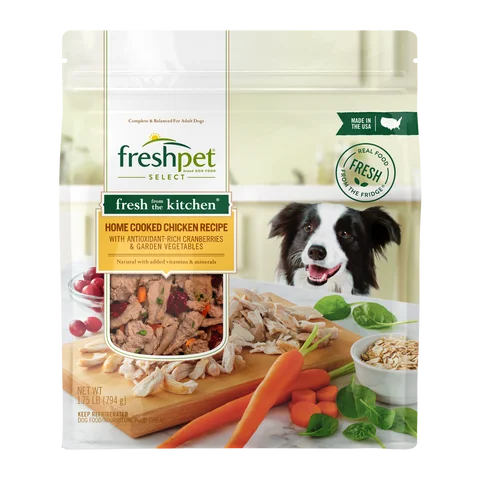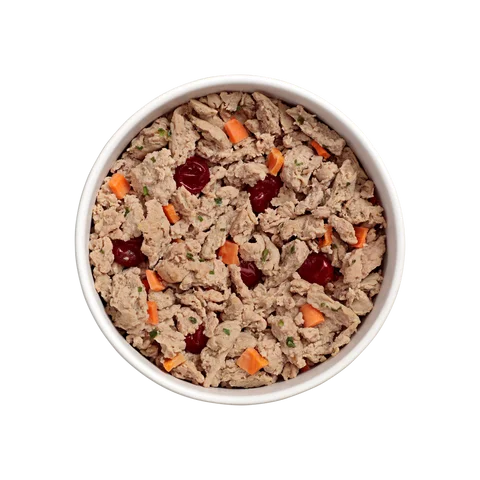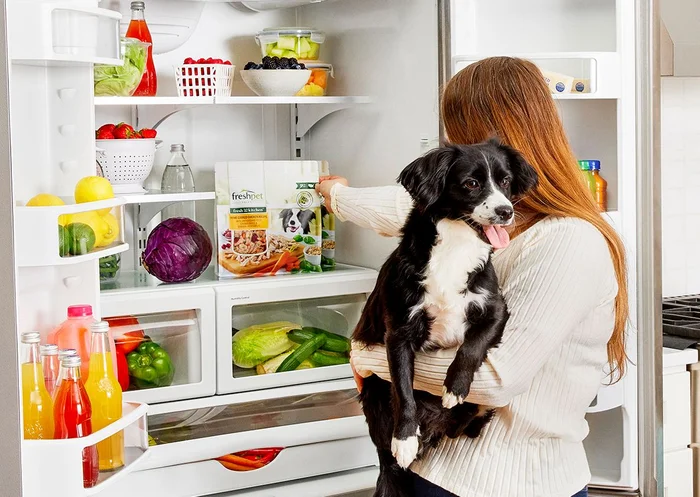


written by Ellie Walker
Pet nutrition is a topic of great importance for pet parents, but it’s also surrounded by numerous myths and misconceptions. To help ensure you’re making informed decisions about the food your pet eats, here are the top five myths about pet nutrition, debunked.
One of the biggest myths about pet nutrition is that home cooking is the only way to ensure the food your pets eat is fresh. While it’s logical to think that this is the only way to ensure the freshness of food, it does have some potential drawbacks:
Making the switch to prepared fresh food is a much easier option to provide a balanced and nutritionally complete diet. Each Freshpet recipe is formulated with the support of our Nutrition Council, a group of veterinarians who help to advise and direct the nutritional development of our fresh food to ensure they are as healthy as possible.
A second myth about pet nutrition is that because kibble is so widely available, it must be the best food for pets. Believe it or not, but since it was first introduced in the 1800s, pet food has remained largely unchanged. This means that modern companies are still using similar methods and processes to create kibble as they did over 100 years ago! This is likely a result of them believing that “if it ain't broke, don't fix it”, but that doesn’t necessarily mean that kibble is the best food for your pet – for instance:
Until Freshpet was created in 2006, pet parents had little choice other than to feed their fur babies kibble unless they had the time and knowledge to craft homemade meals themself. Fortunately, pet parents today have more choices than ever before when it comes to choosing the best food for their pets.
A third myth about pet nutrition is that because our pets don’t have a very strong sense of taste, it doesn’t really matter what’s in their food. Dogs may only have around 1,700 taste buds and cats a mere 473 – both of which are significantly less than the 9,000 humans have – this doesn't mean that they don’t care about what they eat.
Cats and dogs can detect sweet, sour, salty, and bitter tastes and they both have a sensitive sense of smell, which heavily influences their perception of food flavors. Fresh food, such as Freshpet, checks all the boxes when it comes to what pets enjoy in their food:
For some pets, the format of their meal also plays a big role in their enjoyment. Fortunately, Freshpet offers recipes in a range of formats including ready-to-serve bagged meals and patties to suit a wider range of preferences
Pet nutrition myth #4: If my pet’s food is made with good ingredients, it doesn’t matter how it’s prepared
A fourth myth about pet nutrition is that as long as the food is made with good ingredients, it doesn’t matter how it’s prepared. Just like with human food, the cooking method used when making food for pets plays a big role in its overall nutritional levels. Kibble may start with fresh ingredients, but they’re cooked at such a high temperature that they lose all naturally occurring nutrients. These nutrients – as well as the naturally occurring flavor and aroma – must then be replaced with artificial substitutes.
A fifth, and final, myth about pet nutrition is that dogs can eat the same food their entire life. While dogs may have a recipe that they get excited about at every meal, this doesn’t mean that they should eat it for their entire lives. Puppies, adult dogs, and senior dogs have different nutritional needs at various stages of their lives, which means they need food that is tailored to their specific life stage.
You can learn more about how your dog’s nutritional needs change throughout their life by reading this post from our Freshpet vet, Dr. Aziza.
Ensuring proper nutrition for our pets is essential to ensure they live a happy, tail-wagging life. By debunking some of the top myths about pet nutrition, we hope you have the information you need to make informed choices about your pet’s diet. If you have any further questions, schedule a call with your vet. They’ll be happy to help clear up any further misconceptions and help you put together a meal plan specifically for your pet.

dog nutrition & feeding
In the busy summer months, pet parents often wonder how to feed Freshpet while traveling. Here are our top travel tips to help your pet enjoy their Freshpet meals on the go.

dog nutrition and feeding
Understanding pet food labels can be tricky. Freshpet's Dr. Aziza simplifies it, showing how good ingredients benefit your pet's health and happiness.
